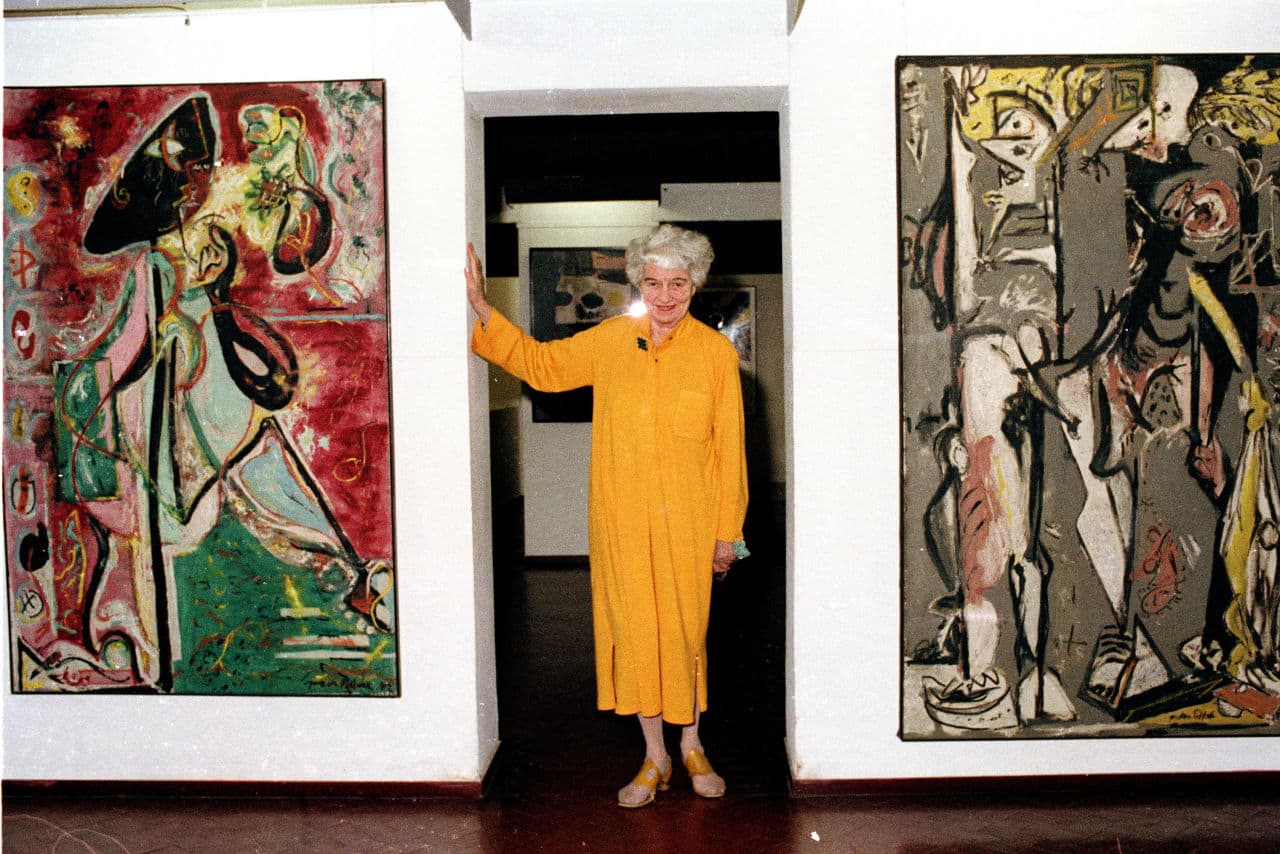Advertisement
Peggy Guggenheim: A Stylish, Wealthy Rebel
ResumeWith guest host Jane Clayson.
Peggy Guggenheim, the rebel heiress who saved modern art from the Nazis. A new book looks at her remarkable life.

There’s a lot of history packed into the life of Peggy Guggenheim. Black sheep of the Guggenheims, her father went down with the Titanic. She was present at the creation of modern art and the modern world, and she became a kind of heroine of modern art. As the Nazis crept across Europe, she saved great artists and as many of their works of art as her sliver of the family fortune could buy. She lived her life with a defiant individualism and a heck of a lot of pluck, but she paid a heavy price for doing it her way. This hour On Point: The original life and the lasting legacy of Peggy Guggenheim.
-Jane Clayson
Guests
Francine Prose, novelist and literary critic. Author of the new book, "Peggy Guggenheim: The Shock of the Modern." Also author of "Lovers at the Chameleon Club, Paris 1932," "Caravaggio" and "Reading Like A Writer," among many others.
Lisa Immordino Vreeland, documentary filmmaker. Writer, director and producer of the new film, "Peggy Guggenheim: Art Addict."
From The Reading List
The Guardian: Peggy Guggenheim: The Shock of the Modern by Francine Prose – review — "When the art collector Peggy Guggenheim moved into her Venetian palazzo in 1949 she installed Marino Marini’s The Angel of the City on the landing stage. You can still see the bronze statue today. It depicts an ecstatic equestrian, body arched, erect phallus pointing urgently at the tourists as they putter up and down the Grand Canal. Guggenheim claimed in her memoir that she had instructed Marini to ensure that the figure’s phallus was detachable so that, should a huddle of sight-seeing nuns happen to pass by in a vaporetto, she could nip out, remove the offending organ, and spare everyone’s blushes."
The Wall Street Journal: The Greatest Collector of Modern Art — "Between the two wars, when modern art elicited negligible respect from curators, whether at the Louvre or in London’s Tate Gallery, Peggy took recurrent, electric pleasure in the shock of the new. JeanCocteau’s bedsheets, originally embellished in part with pubic hairs for the handsome Jean Marais, were not allowed past His Majesty’s customs, until she agreed to display them not in her gallery but her private office."
Vanity Fair: A New Documentary Unearths Lost Taped Interviews with Legendary Art Patron Peggy Guggenheim — "At an early age, PEggy Guggenheim centered herself in the apex of contemporary art’s creative thunderstorm. She traveled the world promoting artists she believed in, dodging world wars, and having casual affairs whenever and with whomever she saw fit. She was a quintessential modern woman, bad nose job and all. Her family was so shocked when she wrote her memoirs in a tell-all called Out of This Century, in 1946, they tried to buy up all the copies and referred to the book as Out of Her Mind. Through it all, Peggy proved to be a revolutionary who changed the course of art history.
Read An Excerpt Of "Peggy Guggenheim: The Shock of the Modern" By Francine Prose
https://www.scribd.com/doc/288525452/Excerpt-From-Peggy-Guggenheim-By-Francine-Prose
Watch A Trailer For "Peggy Guggenheim: Art Addict"
This program aired on November 5, 2015.